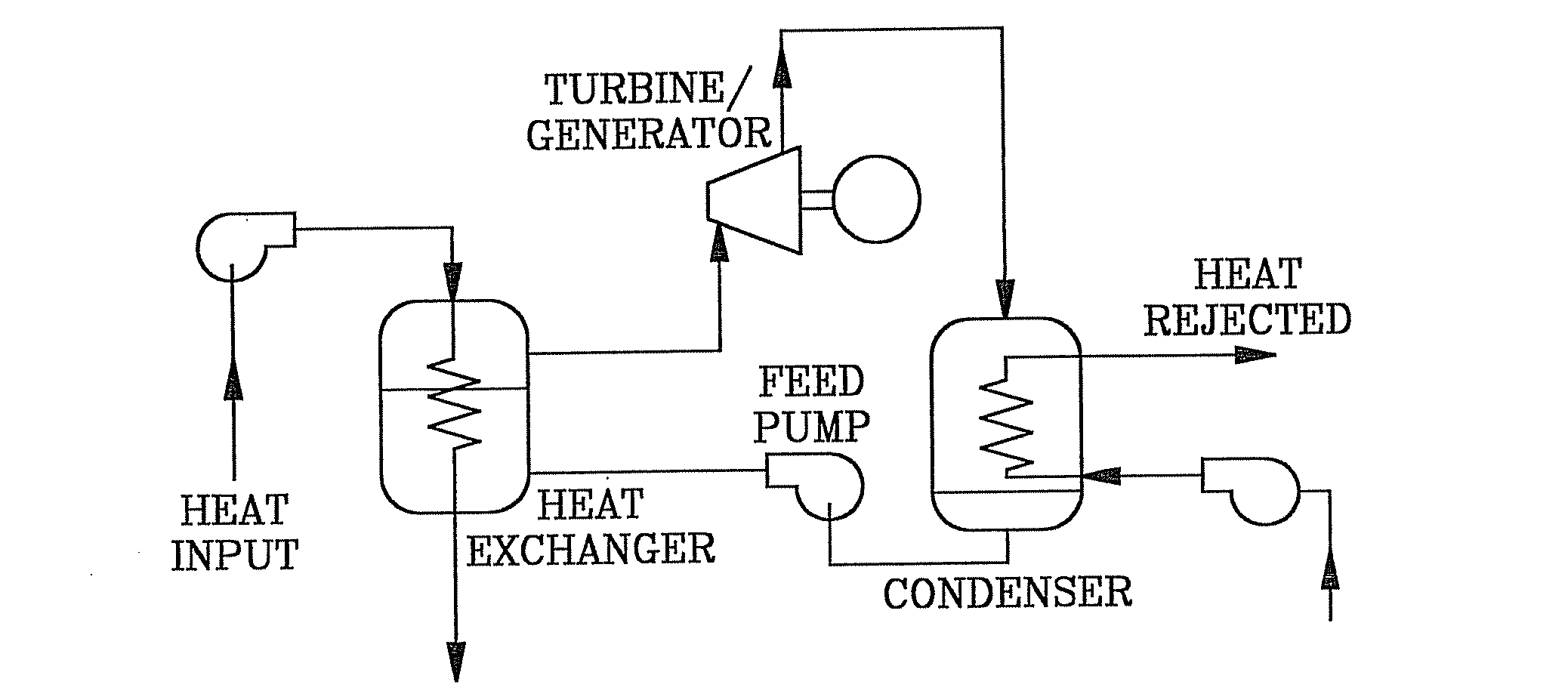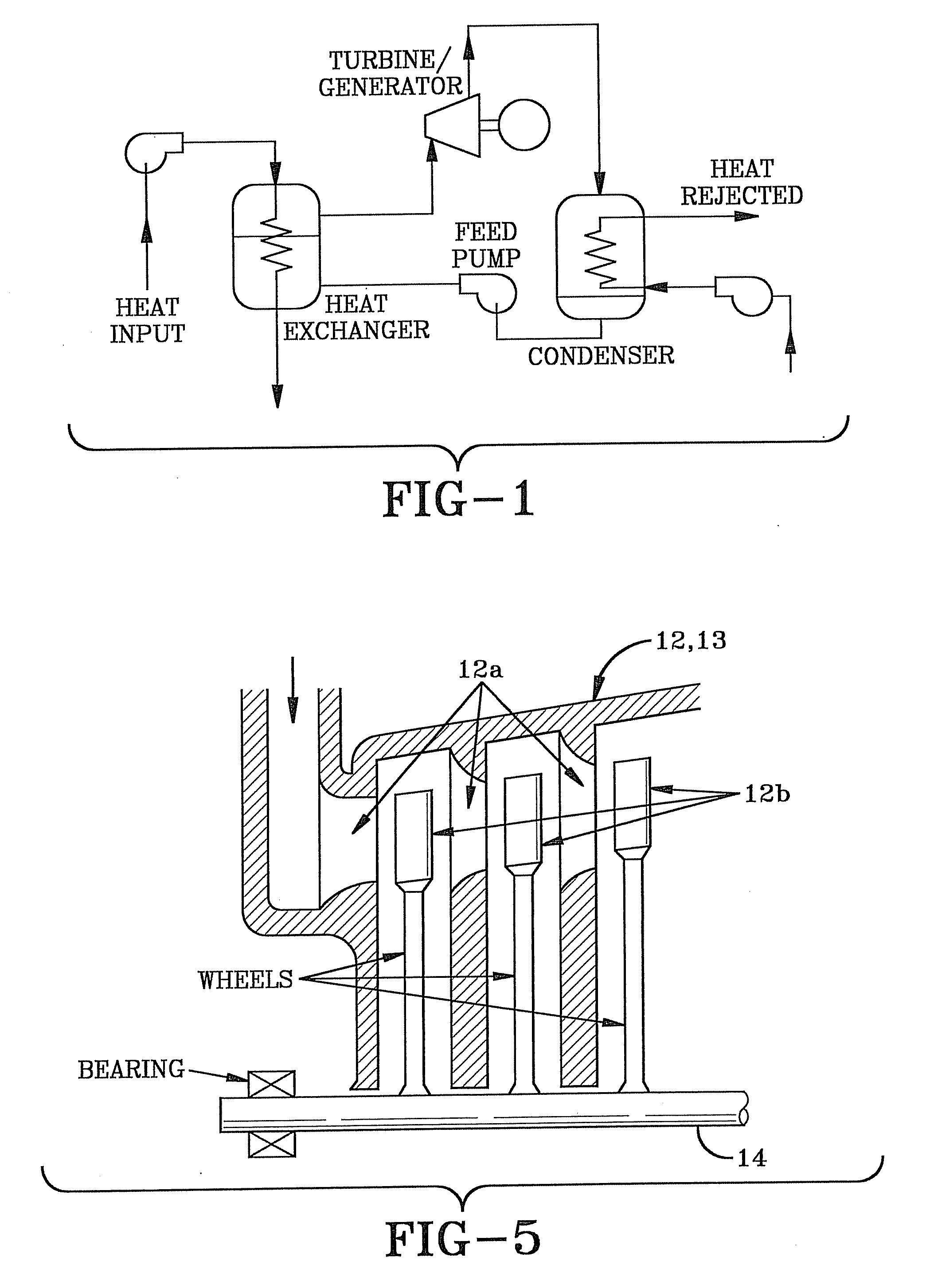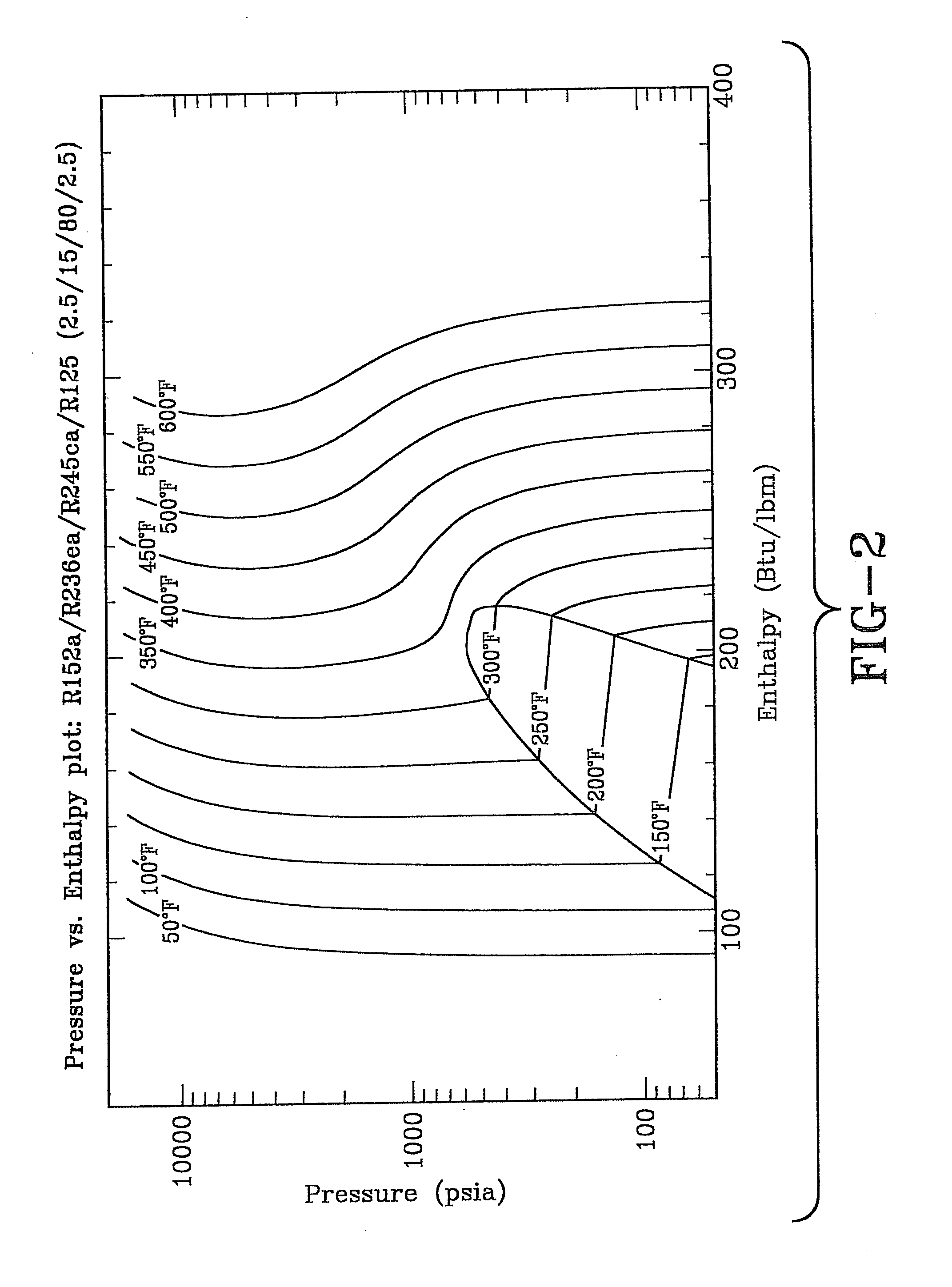Power generator using an organic rankine cycle drive with refrigerant mixtures and low waste heat exhaust as a heat source
a technology of rankine cycle and heat source, which is applied in the field of rankine cycle, can solve the problems of lack of understanding, failure of the electricity market to solve the problems of the industry, and impede the strategic installation of these renewable energy facilities,
- Summary
- Abstract
- Description
- Claims
- Application Information
AI Technical Summary
Benefits of technology
Problems solved by technology
Method used
Image
Examples
first embodiment
[0055]The current paragraph provides the various percentages by weight of refrigerant number 1 of the present invention. The first component of refrigerant number 1, HFC245ca, makes up about 60 to 90% of the refrigerant and in the preferred embodiment about 80%. Thus, HFC245ca most typically makes up somewhere in the range of about 65, 70, or 75% to about 85 or 90% of refrigerant number 1. The second component, HFC236ea, makes up typically about 2 to 30 or 35%, and about 15% in the preferred embodiment. Thus, HFC236ea most typically makes up about 5 or 10% to about 20, 25 or 30% of refrigerant number 1. The third component, HFC125, typically makes up about 2 to 20 or 25% of refrigerant number 1, and about 2.5% in the preferred embodiment. Thus, HFC125 most typically makes up about 2 to 5, 10, 15 or 20% of refrigerant number 1. The fourth component, HFC152a, typically makes up about 2 to 15%, and in the exemplary embodiment about 2.5%. Most typically, HFC152a makes up about 2% to abo...
second embodiment
[0065]The current paragraph provides the various percentages by weight of refrigerant number 1 of the present invention. The first component of refrigerant number 1, HFC245ca, makes up about 20 to 50, 55 or 60% of the refrigerant and in the preferred embodiment about 40%. Thus, HFC245ca typically makes up somewhere in the range of about 25, 30, or 35% to about 45, 50 or 55% and most typically about 35% to about 45% of refrigerant number 1. The second component, HFC236ea, makes up typically about 20 to 50, 55 or 60%, and about 40% in the preferred embodiment. Thus, HFC236ea typically makes up about 25, 30, or 35% to about 45, 50 or 55% and most typically about 35% to about 45% of refrigerant number 1. The third component, HFC125, typically makes up about 2 to 20 or 25% of refrigerant number 1, and about 10% in the preferred embodiment. Thus, HFC125 typically makes up about 2 or 5% to 15 or 20% and most typically about 5% to about 15% of refrigerant number 1. The fourth component, HFC...
PUM
 Login to View More
Login to View More Abstract
Description
Claims
Application Information
 Login to View More
Login to View More - R&D
- Intellectual Property
- Life Sciences
- Materials
- Tech Scout
- Unparalleled Data Quality
- Higher Quality Content
- 60% Fewer Hallucinations
Browse by: Latest US Patents, China's latest patents, Technical Efficacy Thesaurus, Application Domain, Technology Topic, Popular Technical Reports.
© 2025 PatSnap. All rights reserved.Legal|Privacy policy|Modern Slavery Act Transparency Statement|Sitemap|About US| Contact US: help@patsnap.com



